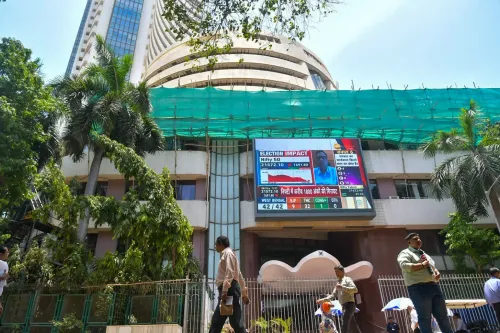Will Mortgage Finance AUM of Non-Banks Grow 18-19%?

Synopsis
Key Takeaways
- Non-bank mortgage lenders to grow 18-19% in AUM.
- Home loans grow at 12-13%, lower than last year.
- Loans against property will see a slowdown in growth.
- Challenges include competition from banks and real estate sales decline.
- Government policies boost affordability in housing loans.
New Delhi, Nov 19 (NationPress) A recent report indicates that mortgage finance firms outside of traditional banks are poised for significant growth in the coming two years. The analysis from Crisil Ratings reveals that the assets under management (AUM) for these non-bank lenders are projected to increase by 18–19 percent this fiscal year and the next, aligning with last year's growth of 18.5 percent.
However, the growth trajectory varies across three major loan categories: home loans, loans against property (LAP), and wholesale loans.
Home loans, which represent approximately 59 percent of the portfolio, are expected to grow at a moderate pace of 12–13 percent this year, slightly down from the 14 percent growth seen last fiscal year.
On the other hand, LAP, which constitutes around 32 percent of the total AUM, is anticipated to grow at a quicker rate than home loans but with a slowdown compared to the previous year, expected to be in the range of 27–29 percent against last year's 32 percent.
The wholesale loan sector, which includes financing for developers and lease rental discounting, has shown a slight uptick in fiscal 2025 and is expected to enhance overall sector growth.
The report emphasizes that the long-term factors propelling home loan demand remain robust. With low mortgage penetration in India and increasing urbanization, the outlook is promising.
Additionally, improved affordability is evident as income growth outpaces housing prices, coupled with lower interest rates.
Recent income tax reductions from the Union Budget are set to further increase disposable incomes, thereby facilitating borrowing. Furthermore, GST cuts on building materials and under-construction properties are likely to enhance affordability.
New policy initiatives, such as the Interest Subsidy Scheme, are also expected to benefit the affordable housing sector.
Nonetheless, non-banking lenders encounter two primary challenges. Firstly, they face intense competition from banks, particularly in the prime home loan sector. Secondly, there is an anticipated decline in residential real estate sales in the top seven cities, as noted in the report.








